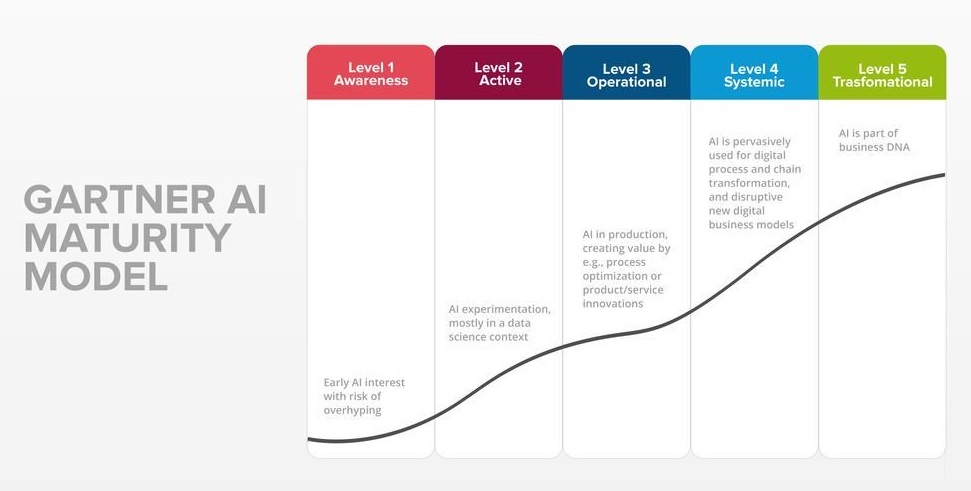Build vs Buy: Is this the Ultimate AI Question?
FirstAlign Press Release: Feb 18, 2020
-
What should really be the first consideration in developing your AI strategy?
If organizations investing heavily in AI have demonstrated but a single thing it is this. The policy is working, the outcomes are happening and the use of Artificial Intelligence is fast becoming a business imperative. Business models are forever changing as a result. The question is no longer “should we?”, it is now “how long do we wait before do?”.
What is also known is that it is not a situation that playing catch up will suit.
Predictions say that AI will be in every business in one form or another within the next decade. Questions still abound however in the C-Suite about "what it is" and "how it can be applied", "Is it small and silo based or is it integral to you operating model?". The answer is but a function of time. Long term it can only be 100% adoption and 100% fully integrated. AI augmentation has tripled in the last year alone.
With that out of the way the question becomes "how?", which starts with the same old build vs buy dilemma.
For some companies, that means building AI systems from scratch. Finding the right talent is difficult and expensive, and, at 85 percent, AI projects have a high likelihood of failure, according to Gartner. Even when a project works, a commercial vendor might soon come out with something better, at a lower cost, with regular upgrades, more integrations, and a more intuitive UI. Alternatively, your DIY AI sweat equity might be rendered superfluous when the new AI capability you’re working on is included as a free feature or upgrade to a platform your company already uses.
- Are you buying platforms or are you buying capability?
- Are you constrained by a 'time to market' need?
Commercial product vs in house build. Using a commercial product, on one hand, can facilitate rapid experimentation with many different AI technologies, and minimal investment. To succeed with AI, volume is important, says Rob Thomas, IBM's general manager of IBM Data and Watson AI. However, this all rather depends on maturity.

Gartner predicts that by 2020, 20 percent of organizations will dedicate workers to monitoring and guiding neural networks. They identified four lessons that have emerged from early AI projects;
- Aim low at first: start with small scope and grow.
- Focus on augmentation not replacement of people: avoid resistance to change.
- Plan for knowledge transfer: learning is key.
- Choose transparent AI solutions: black boxes make life difficult.
In considering this it would seem that commercial is the best option. Of course, this not so simple. The assessment of buy or build is one that has many variables. The focus of a project's initial stage should not be the same when more maturity is involved. Considerations such as; internal capability, team maturity, strategic requirements, scope, complexity, data, time to market determine how long do you have to get your first product in place.
From all of this how complimentary can platforms be to your considerations, and can your solutions be built quickly?
Your focus should first be on the understanding of expectations and outcomes, business drivers and value creation. Are you ready for big expensive solutions or complex internal solution builds?
You may want to start with a discovery, assess what you have. Create best practices, get your team trained on AI skills and collaborate with others. Given the right dataset build a minimum viable product for a pilot problem and an expression of proof of concept. Build the right experience not just the expertise. Use a cloud-based AI stack from AWS, Google or Azure if you don’t want to invest in hardware and licenses. You need to invest time and money in finding skilled resources and keep your current team engaged in continuing learning new skills. Develop your use cases and test your solutions, build a gradual approach in early speed to test market areas, and determine where success can quickly be created.
Old thinking won’t cut it, your approach must be unique and strategic for AI initiatives. Building an “AI first” culture or “AI first” policies could be very challenging, but without any delay you need to start looking at your organization’s existing products and services through the lens of Artificial Intelligence. Start building good data strategies and create unique data sets so that you are ready with a failure-proof AI center of excellence.
Only then should you be concerned with long term platform solutions.
"Build your people towards and more fulfilled experience, by investing in your capability to create it."
Continuous AI, maximizing human potential.
Making a difference by improving the way the world works. Understand probability, by enhancing predictability and strategic focus.
How FirstAlign can help!
- Discover and deconstruct need
- Design solution and program
- Deliver and embed
View our other publications at: http://firstalign.com/press/index-publications.html